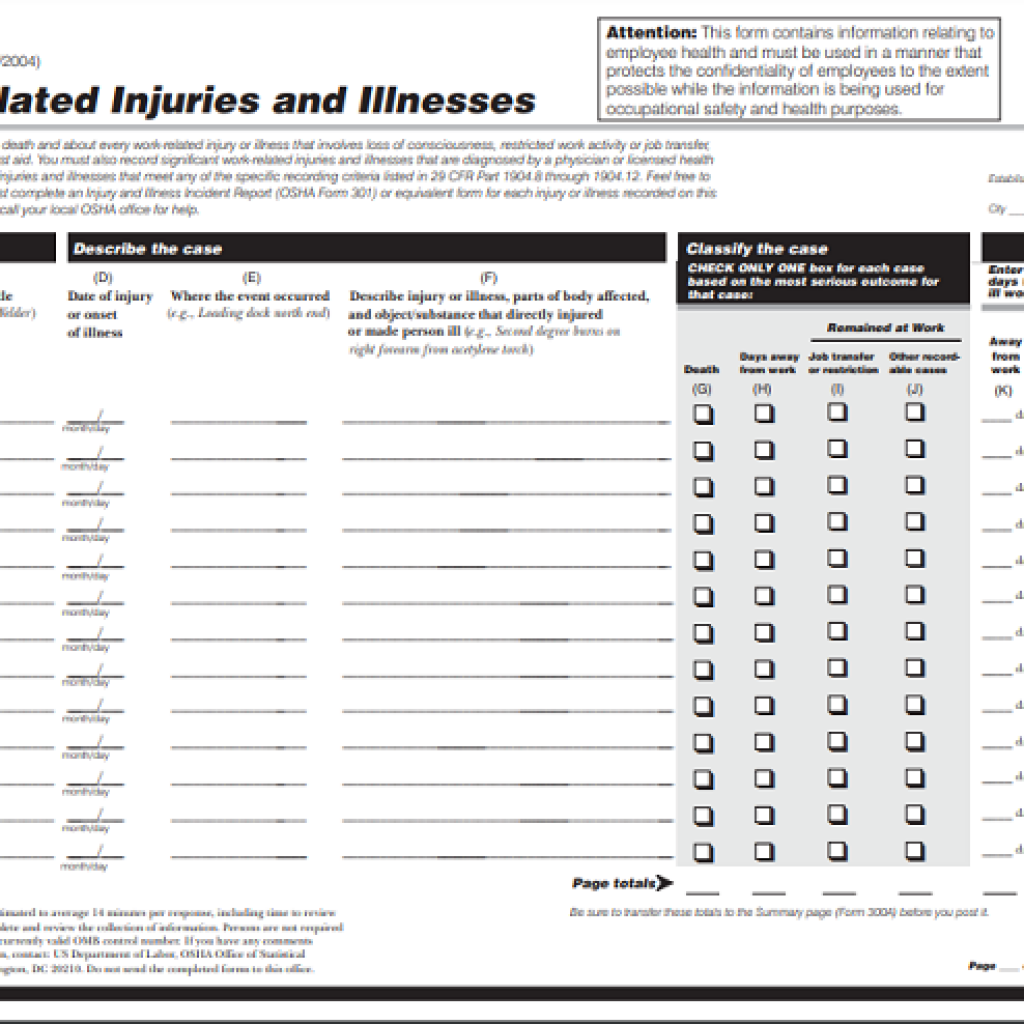OSHA’s record keeping requirements cause confusion for many people every year, possibly because posting the 300A form is only done once a year. The 300A Form is a recap of the workplace injuries recorded on your OSHA 300 Log. The 300A Form recap of injuries for 2019 must be posted by February 1, 2020. It stays up from 2/1/2020 through 4/30/2020.
Let’s cover some of the basics.
Most importantly, who has to complete these forms? This is decided by both what a company does and how many employees it has. Most of our clients are in construction and manufacturing and those industries are required to complete these forms. Below is link to low-risk industries that are not required to complete these forms, unless they receive a special request from OSHA. If your industry is not on THIS LIST, you are required to keep these forms.
There is a size exemption, no matter what industry you’re in. If an employer in any industry employed no more than 10 employees at any time during the preceding calendar year they are not required to maintain the OSHA 300 Log and 300A Form. This includes all employees, not just the field or shop. Office, management, part time, etc. are all included in the count. The simplest way to determine number of employees, is to look at how many paychecks were written in each pay period. If more than 10 were written in any one pay period, your company is required to complete these forms for the entire year.
The next problem we see, is what to include on the OSHA 300 Log. Some companies put everything on the 300 Log. Just because something is a worker’s compensation injury does not automatically make it an OSHA recordable. The accident must be work-related or the employee is injured as a result of conducting company business in the work environment. If the injury meets the general recording criteria: death, days away, restricted medical injury, the case must be recorded.
Only medical treatment cases must be logged. OSHA defines medical treatment as the management and care of a patient to combat disease or disorder. Visits to a physician or other licensed health care professional solely for observation or counseling or diagnostic procedures, such as x-rays and blood tests, including the administration of prescription medications used solely for diagnostic purposes (e.g.,eye drops to dilate pupils) are not considered medical treatment.
First Aid cases do not have to be recorded. This is a complete list of First Aid Cases for recording purposes. If treatment prescribed to an employee is not on this list, it is NOT first aid and must be logged.
- Using a non-prescription medication at nonprescription strength;
- Administering tetanus immunizations;
- Cleaning, flushing or soaking wounds on the surface of the skin;
- Using wound coverings such as bandages, Band-Aids™, gauze pads, etc.; or using butterfly bandages or Steri-Strips™ ;
- Using hot or cold therapy;
- Using any non-rigid means of support, such as elastic bandages, wraps, non-rigid back belts, etc.
- Using temporary immobilization devices while transporting an accident victim(e.g., splints, slings, neck collars, back boards, etc.).
- Drilling of a fingernail or toenail to relieve pressure, or draining fluid from a blister;
- Using eye patches;
- Removing foreign bodies from the eye using only irrigation or a cotton swab;
- Removing splinters or foreign material from areas other than the eye by irrigation, tweezers, cotton swabs or other simple means;
- Using finger guards.
Downloadable OSHA forms are available here. HTTPS://WWW.OSHA.GOV/RECORDKEEPING/RKFORMS.HTML
For restricted work or days away: Count the number of calendar days the employee was on restricted work activity or was away from work as a result of the recordable injury or illness. Do not count the day on which the injury or illness occurred in this number. Begin counting days from the day after the incident occurs.If a single injury or illness involved both days away from work and days of restricted work activity, enter the total number of days for each. You may stop counting days of restricted work activity or days away from work once the total of either or the combination of both reaches 180 days.

Choose ONE of the categories in the gray box. Classify the case by recording the most serious outcome of the case, with column J (Other recordable cases) being the least serious and column G (Death) being the most serious.
(Selection from the OSHA 300 log, pictured)
The information from the 300 Log is transferred to the Annual Summary or 300A form.
In addition,OSHA requires you to enter the average number of employees and the total hours worked by your employees on the Annual Summary.
The 300A form must be signed by a company executive and then posted.
One final note: Post only the annual 300A Summary between February 1 and April 30. The rest of your Log contains sensitive employee information that should be considered private and confidential.
This article doesn’t cover the electronic reporting component (due March 2).
If you need more information on OSHA-recordability and other record keeping requirements, or want training on the OSHA 300 Log, contact Teddi Penewell at [email protected].
TEDDI PENEWELL
